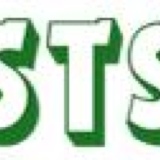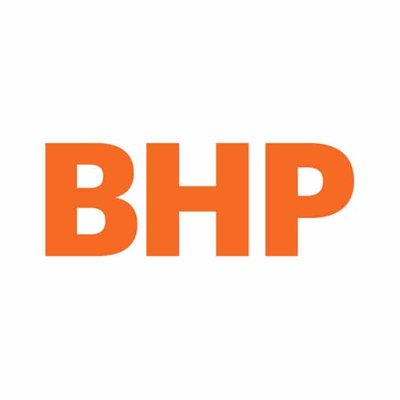Title Page
-
Site conducted
-
Conducted on
-
Prepared by
-
Location
Start of Shift Rhythm and Routines
-
Inspects AHT routes and can identify all hazards upon inspection and rectifies accordingly.
-
Able to identify intersecting lanes that will hold permissions (if present).
-
Inspects circuit for all speed and traction zones - adjusts or removes accordingly, changes name and date to reflect.
-
Identifies passable zones that can be rectified by near by AUX machines to increase AHT performance. Action taken by Field Officer.
-
Inspects BDR's and their validity.
-
Inspects/monitors lane segment lengths, widths and ensures haul routes have manned lanes ticked up to assist with AHT interactions. Rectifies where needed or contacts AH Builder.
-
Follows both loaded and Empty AHT to identify any abnormal or undesirable behaviours.
-
Monitors AHT speeds on client screens.
-
Inspects queue and exit points both virtually and physically for optimisation. Rectifies with AH Builder (Load Plan). Communicates any changes to Dump Plan with AH Builder.
-
Can identify if Dump Plans have correct lanes according to fleet running on circuit to ensure optimisation.
-
Is aware of Circuit/Loading unit priority as per 24hr Plan in area of accountability.
-
Is aware of Dump Priority as per 24hr plan in area of accountability.
-
Checks dump plan settings and communicates with Dozer Operators to confirm if correct (number of dumps per spot, dump scripts checked - aligns with Fleets on circuit and material).
- Yes
- No
- N/A
-
Actively monitors truck tiles for rapid response to health events and OD's.
-
Identifies where Manned Lanes are required to reduce truck de-rate and prox events.
-
Does the Field Officer have a copy of the Weekly, 24hr Plan?
-
Field Officer is able to import DXF - Lightning or Blast DXF's.
-
Delegates works to AH6 where needed to ensure circuit health over miscellaneous work.
LANES
-
Understands minimum truck width for each class? *********
-
Can demonstrate changing centre lines for optimisation of haul circuit.
-
Explain maximum length of lanes - 300M.
-
Explain and demonstrate lane splits and best placement for lane segment splits.
-
Explain and demonstrate lane splits at intersections and where splits should be located.
-
Can utilise and explain Site Monitor Exception Mode.
-
BDR and Lanes - When wheel rolling should new lanes be built or widened for DBR (If room available)?
-
Can identify lane length, travel times, and speed limits through Lane Editor. **Lane speeds placed here are not easily identified and is a good trouble shooting task***
-
Can show how to restrict lanes to empty/loaded and by truck class.
-
Can create new lanes with out interrupting current Haul Circuit (builds new lanes prior to removing old). Checks and confirms travel times to ensure new lanes are equal or better optimised.
-
What is the max OEM grade for AHT's - 15%.
-
Do we snap lanes to Surface? Why not? a) AHT's update surface as the travel.
-
What are you looking for to ensure deadlocks are not presented in dump plans and load plans.
-
Field Officer understands how to Simple Assign trucks to lane segments - (AH Control request).
SURVEY
-
Can explain how completing surveys outside of Dynamic area's are important to assist AHT's (Surface updates, Safety).
-
What is the desired wheel position for High Wall Surveys when completing survey in LV?
-
Can Field Officer import Surveys?
-
Can Field Officer Import LiDar in Dump Plans?
-
What is the max nodes allowed in plans (90) - Explain why and how your survey impacts these? (Drive at reasonable speed).
-
What is the "CSV" Survey import?
-
Identified U-Turn lanes on haul roads that are not being utilised for single use are escalated to AH Builder for removal.
RESPONDING TO HEALTH EVENTS
-
Field Officer actively opens red tiles without being prompted from AH Control for rapid response to AHTs with Health or Obstacles Events.
-
Field Officer rectifies or takes action to rectify Obstacles that require removal. i.e. moves tumble weed or calls AUX machine for clean up.
-
Field Officer takes action for Traction Events - Places traction zone / communicates with Water Cart.
-
Field Officer puts commentary in Traction Events.
-
If required and able to Field Officer prioritises "Single Lanes" around U/S machines keeping circuit cycle priority - Communicates the ability for single lanes with AH Control.
-
AH Field Officer prioritises Health Events - i.e truck on dig floor over dump if secondary dump is available for AH Control to reallocate to.
-
Field Officer liases with AH6 and AH Control to utilise AH6 for truck recovery as primary personnel for task.
ZONES
-
Field Officer is aware of the naming and colour conventions - able to provide document.
-
Field Officer can identify node limit on zones - able to show how to identify through Zones Page.
-
Field Officer is able to show how to audit colour and naming convention through Zones page.
-
Field Officer removes redundant zones to ensure Mine Model accuracy and reduction in zones.
-
Creates Zones clockwise as per OEM.
-
Able to demonstrate splitting a zone.
-
Able to demonstrate placing Zone down on TOPE Screen - beneficial for upskilling personnel without a client screen.
-
Consistently reviewing and updating circuit and haul road zones.
-
Field Officer updates date in naming convention daily when altering or inspecting all zones.
DUMP - Plans
-
Creates Dump Plan with correct naming convention.
-
Explains Position Tolerance.
-
Explains Dump Length.
-
Explains Dump Width.
-
Explains Spill Offset.
-
Explains Heading Tolerance.
-
Explains Heading.
-
Explains reference point.
-
Explains material mix.
-
Explains all Advanced setting and gives examples for each feature.
-
Small area optimisation - When to use (meters etc) and it's impact on planning.
-
Narrow Area - When to use (meters etc.) Impact on planning.
-
Field officer ensures Plan U-Turn is unticked.
-
Explains when to use Entry Point.
-
Explains how to optimise que and exit points.
-
Field Officer communicates all changes to AH Builder to hand Dump back.
END OF SHIFT
-
Field Officer checks all Zones prior to leaving circuit.
-
Field Officer completes priority works prior to leaving circuit.
-
Field Officer completes handover sheet (iPad), ensures priority works are listed for on coming Field Officer including pictures of relevant work areas of concern.
-
Field Officers informs AH Control when planning to leave circuit for end of shift.
-
Field Officer informs AH Control of the on coming Field Officers name.
-
Field Officer ensures car is fueled and LV cleaned for safe operation prior to ending shift.
-
Field Officer raises all concerns for circuits to relevant pit Supervisor for hand over.








